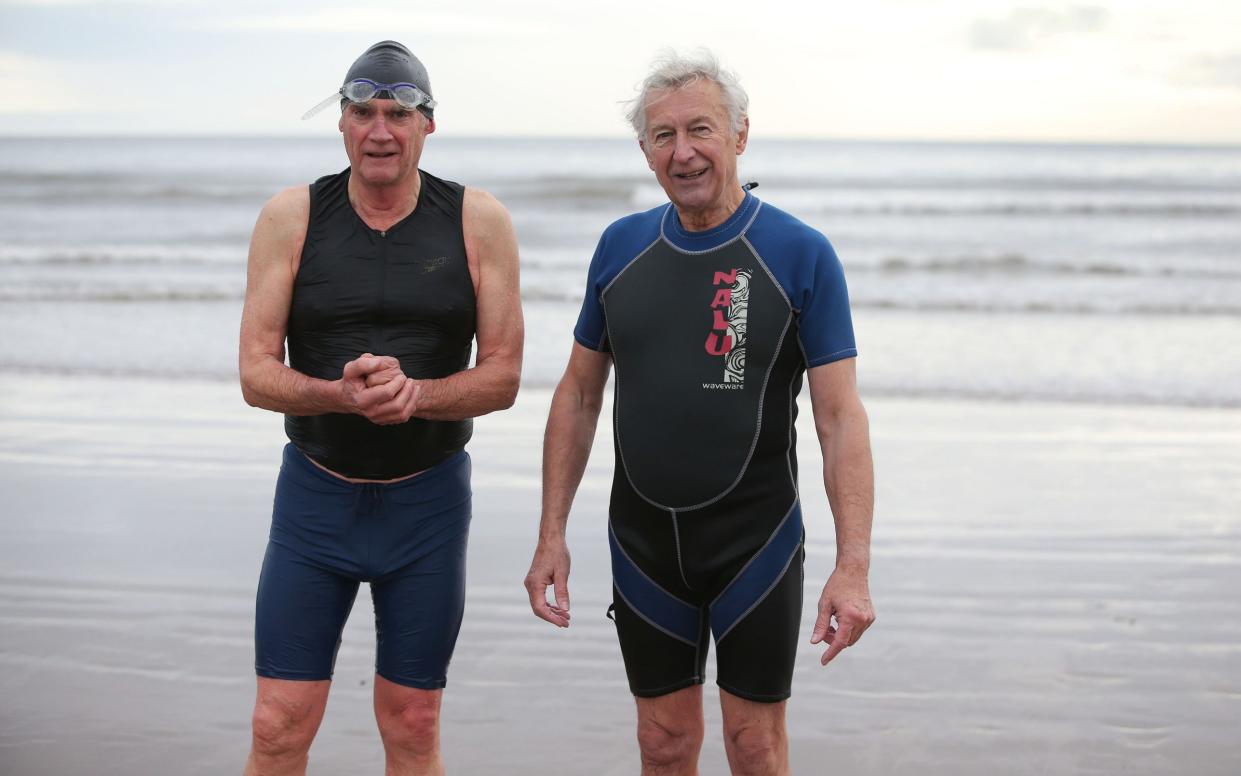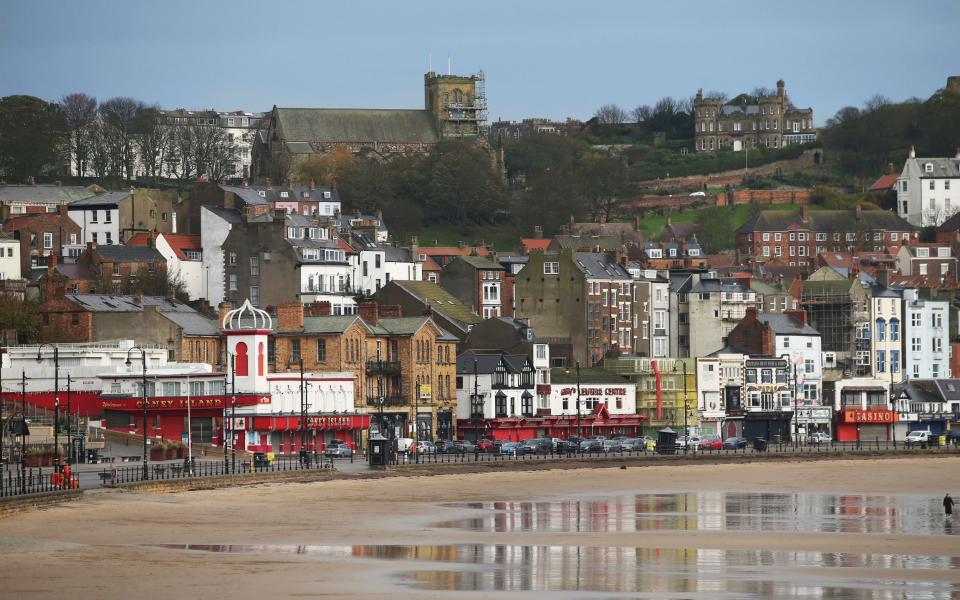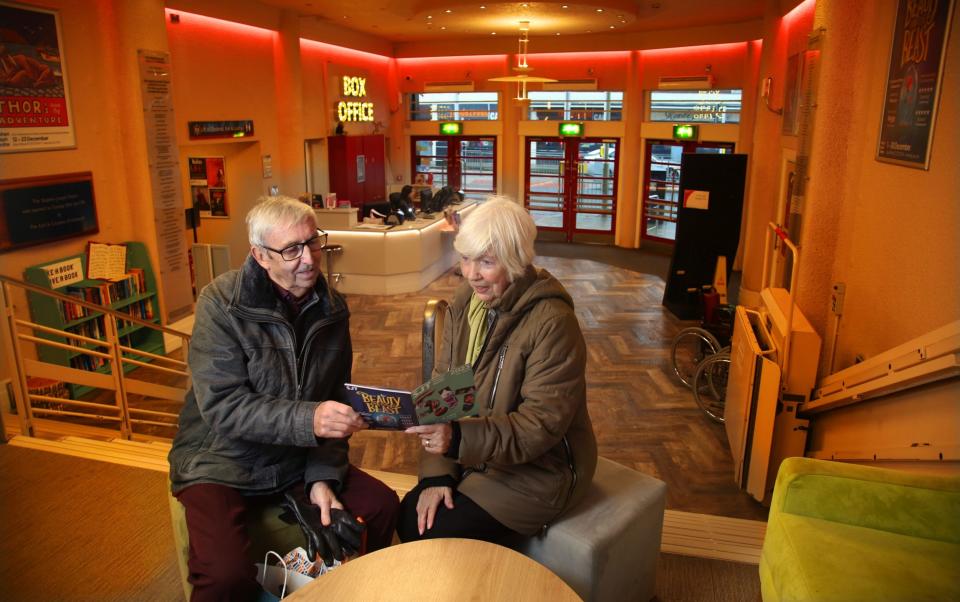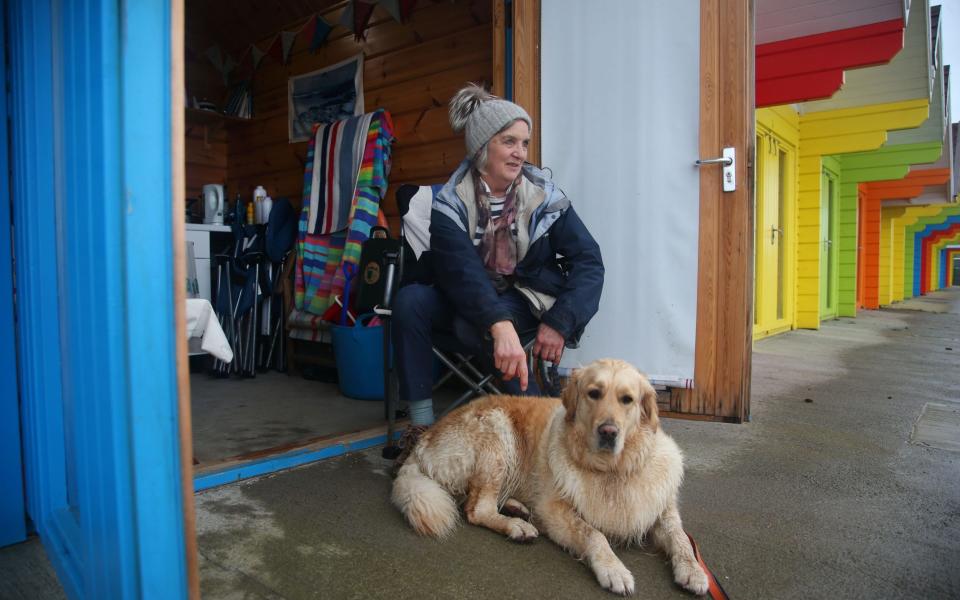'Your lungs open and you feel like you can breathe again': Why retirees are flocking to Scarborough

It’s 10am on a rainy Tuesday morning in November and John Dalton and Peter Bailey are just finishing their swim in the sea. Emerging from the waves, the pair disappear into a seafront cafe to change and warm up with a cup of coffee.
Dalton is 70 and he swims in the North Sea here in Scarborough most days, “except when the weather is really foul,” he says. He’s a member of three outdoor swimming clubs in Scarborough (there are four or five in total), but the one he spends most time with is the Salted Seanuts. That’s when he’s not playing his harp for the entertainment of residents in one of the local care homes, going to a jive dance class every Tuesday evening, learning to tap dance, riding his bike on the nearby Yorkshire Moors or hanging out at Scarborough’s jazz club.
Dalton retired here from Glastonbury four years ago, knowing nobody but wanting to be closer to his mother who lives near Peterborough and his daughters in Scotland – as well as being near the sea so he could swim as much as he liked.
“Yorkshire people are very friendly, and the property is comparatively much cheaper here than anywhere else,” he says. And he likes the fact that Scarborough is a proper resort, with plenty to do, good cultural life and easy proximity to York and beyond via the hourly trains.

He’s not the only one. Last week, Scarborough was named Britain’s retirement capital, with more than one in four of its 62,000 residents (27.6 per cent) aged 65 or over. It’s not hard to see why: the town boasts two incredible beaches and is perched right next to the North York Moors, plus it’s got good infrastructure in the form of regular buses and rail links to York and Hull, a hospital with a large new A&E department and plentiful and cheap housing. There’s also lots going on, from Alan Ayckbourn plays at the Stephen Joseph Theatre to rock concerts at the open-air theatre; tea dances at the pavilion to pleasure gardens in Peasholm Park.
But really, it’s the lure of the sea that is the most attractive thing about it. As Tobyn Dickinson, who has recently opened a residential care home, the Mayfield, up the coast in Whitby, and is opening a second in Scarborough next September, puts it, “people love the sea and a lot of people want to retire to be by the sea”. When you’ve got the ever-changing water to look at, life never gets boring.
The town has an illustrious history as a place of holiday and healing: in 1626, a Mrs Thomasin Farrer discovered a stream of acidic water running from one of the cliffs to the south of the town, which led to the establishment of Scarborough Spa; a book about the waters published in 1660 led to a flood of visitors. The first rolling bathing machines were reported in 1735 and Scarborough became a popular summer destination for wealthy Londoners, only boosted by the arrival of the Scarborough to York railway in 1845.

And today, while Scarborough retains its summer holiday attractions (and summer day-trippers) with its long sandy beaches, colourful beach huts, amusements arcade and fish and chip shops, many of its current residents are those who have decided to turn their summer holidays of old into permanent reality.
Ken and Irene Barlow are one such couple. I met them in the fabulous art deco Stephen Joseph Theatre – pleasantly busy even on a Tuesday afternoon – just after lunch; they had popped in to book tickets for a cinema matinee a couple of days later.
The couple, in their 70s, are originally from Liverpool but retired here 20 years ago, to a small village called West Ayton, just outside the town proper. They keep themselves busy: Irene goes to a dance class every week, Ken plays golf at the North Cliff Golf Club and they love a long walk on the beach followed by a seafood platter lunch at The Lookout on the pier, especially on a sunny day in winter. Moving to Scarborough, says Ken, was “one of our better moves”.

“It’s easy to integrate here and feel welcomed,” says Phil Fletcher, director of local estate agency CPH Property. Fletcher has lived in Scarborough for 20 years and adds that he sees lots of older clients coming through the doors, attracted by the low property prices and the fact that the town has “everything on the doorstep”. Certainly, when it comes to buying a house, there’s plenty on offer, ranging from 15th- and 16th-century cottages in the old town to newbuild flats on the North Beach, with everything from bungalows to Victorian period terraces in between – and nothing for sale for much more than about £400,000.
The outdoors seems to be the major lure for most of the people I meet – who are all surprisingly happy to talk to a random reporter. Sue Wood, 68, is enjoying a coffee on a deckchair outside her bright yellow beach chalet on North Bay, having just taken her three-year-old golden retriever Barley for a walk on the beach.
Making me a coffee in her little kitchenette, she tells me about coming back to live here, having grown up on a farm nearby, and her plans to buy her beach chalet next year now that they are all up for sale (she has rented it for the past seven years). She spends a lot of time here, she tells me, with three of her grandchildren, walking the dog and watching the waves.

It all sounds idyllic, and mostly is, but there’s no doubt there are downsides. While the town retains a certain grandeur, it’s sadly of the faded variety; the high street is “a bit grim”, as Dickinson puts it. Even in the more charming old town, the Main Street of Eastgate can be “seriously depressing”, says 75-year-old Maggie Corder, who is in the process of renovating a “derelict old house” in the area to retire to. “There’s no deli, and nowhere to get a decent coffee.” It’s frustrating, says Corder, that the council often seems not to care – bins remain unemptied during the summer months, and “why haven’t they got bathing huts on the beach like in Victorian times, or art on the beach to showcase all the artists who’ve moved here?”
For its part, the local authority points me to the recently completed restoration of South Cliff Gardens, jointly funded by the National Lottery and the council, which contributed just over £2 million to the £7.158 million project; a forthcoming renovation scheme for the West Pier and a plan for a year-round Scarborough Fair cultural offering, kicking off with a recently installed display of winter lights.
Other districts have their own distinct character. South Bay is what locals wryly refer to as the “Blackpool” part of town: it’s got that classic seaside town feel, with amusements, ice-cream parlours, fish and chip shops and donkey rides on the beach. North Bay is wider and wilder, a place for windy walks, surfing or enjoying the sight of the brightly painted beach chalets that line the sand; the two are divided by the old town with its higgledy-piggledy cobbled streets, while the small villages that crowd around the outside of Scarborough are generally considered a little smarter.
Top of the pile of these is Scalby, where Bryan Jaram and his wife Pam retired permanently in 2008. Jaram, now 77, was born and brought up in Scarborough and used to run an estate agency in York; now he paints and goes on bike rides on the moors on his electric bicycle. “It just feels so healthy here – as soon as you get here your lungs open out and you feel as if you can breathe again,” he says. “Even Pam, who doesn’t come from Scarborough, thinks it’s great.”
Since going to press, The Telegraph has learnt that Ken Barlow died on Friday November 25, while playing golf at his beloved North Cliff Golf Club. Our thoughts are with his family.


